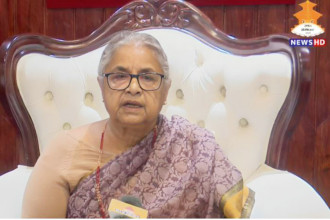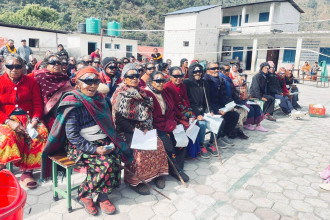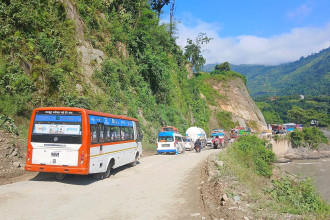-1752574411.jpeg)
LALITPUR: South Asia Watch on Trade, Economics and Environment (SAWTEE) and the WTO Chairs Programme–Nepal at Kathmandu University School of Management (KUSOM) on Monday hosted a stakeholder discussion on the prospects for green hydrogen in Nepal, examining global and regional developments, sectoral challenges and pathways to adoption.
As climate change intensifies, driven largely by global dependence on fossil fuels, green hydrogen produced via renewable-powered water electrolysis has emerged as a potential enabler of net-zero economies worldwide. Experts at the event stressed the urgency of transitioning to clean energy systems to mitigate greenhouse gas emissions.
Nepal currently generates around 3,000 MW of hydropower and plans to expand capacity to 28,500 MW within a decade through $ 46.5 billion in public and private investments. With hydroelectricity recognised as a government priority, panellists noted credible potential to leverage surplus electricity for green-hydrogen production, thereby fostering domestic clean industrialisation and diversifying energy exports.
Specialised research bodies such as the Green Hydrogen Lab at Kathmandu University are developing technologies to support this transition. Against this backdrop, Madhu Marasini, senior fellow at SAWTEE and former government secretary, and Prajol Joshi, economist at SAWTEE, authored an issue note titled “Green Hydrogen in Nepal: Unlocking a Sustainable Energy Future.”
In his opening remarks, Marasini said energy today serves as both a resource and a tool of foreign policy and international trade, underlining the growing importance of energy diplomacy and the need for stronger international coordination.
Dr Biraj Singh Thapa, team leader of the Green Hydrogen Lab, highlighted that Nepal is progressing alongside both developing and developed nations in research and human-resource development. He argued that this parallel advancement offers Nepal an opportunity to build a hydrogen economy tailored to its needs and strengths.
Nawaraj Dhakal, executive director of the Alternative Energy Promotion Centre, noted green hydrogen’s inclusion in Nepal’s NDC 3.0 and national budget but warned that public awareness remains low. He called for government, academia and the private sector to collaborate on clear policies and a roadmap for adoption.
Maheshwar Dhakal, joint secretary at the Ministry of Forests and Environment, said the NDC 3.0 update signals Nepal’s shift towards sustainable energy and reduced reliance on imported fossil fuels. He urged stronger academic partnerships with institutions in China and India to accelerate research and development.
Suman Joshi, executive member of the Independent Power Producers’ Association, Nepal (IPPAN), argued that subsidies for upstream and downstream hydrogen processes would encourage private-sector investment and add value to hydropower generation.
-1752574411.jpeg)
-1752574411.jpeg)
Sandip Kumar Dev, joint secretary of the Water and Energy Commission Secretariat, recommended pilot projects to build public trust and stressed that the government must create a supportive environment to attract private investment.
Prof Dr Achyut Wagle, vice chancellor of Kathmandu University, confirmed the university’s readiness to develop human resources and technical innovations. “We aim to partner with utility companies, municipalities and the private sector to drive component-based projects, despite technical challenges,” he said.
Dr Posh Raj Pandey, chair emeritus, concluded by emphasising the need to assess green hydrogen supply and demand comprehensively and to monitor hydrogen leakages as the ecosystem develops.
Attendees included policymakers, academics, journalists, energy experts, industry stakeholders and civil-society representatives.





-1765195659.jpeg)
